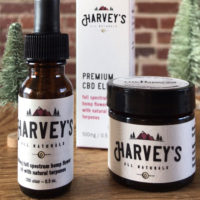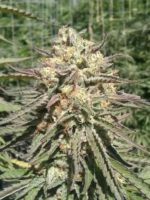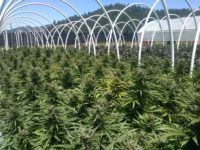At first glance, the layout of a grow room and a factory production line might seem to have little in common. But whether a facility is producing plants or parts, adopting good manufacturing practices (GMP) can benefit plant quality, harvest consistency and production economics.
What is GMP?
Simply defined, GMP refers to a production system made up of processes, standards and safeguards designed to consistently meet a defined quality standard. In the grow house, establishing, documenting and implementing GMPs can help guard against problems ranging from plant contamination to inconsistent harvests. GMPs can be organized into five key categories, each which contribute to cultivation:
- People: The people working in the grow house understand their responsibilities
- Processes: Production processes are clearly documented and consistent across harvests
- Procedures: Guidelines are documented and communicated to all employees
- Premises: Grow rooms and equipment are clean and maintained
- Products: Materials used in cultivation (fertilizers, lighting, growing media, etc.) are assessed
Optimizing each of these five P’s in production can help cultivators protect their business and their margins even as flower prices in both legacy and emerging states continue to trend downward. Below, we look at four GMP insights that can help cultivators coordinate the five Ps to achieve quality, consistency and economic objectives harvest after harvest, without massive investments in capital, even during turbulent market conditions.
#1 Know your numbers and their value
Avoid the temptation to lump production costs into very broad categories, i.e., “cost of goods.” Understanding the exact cost of all inputs that go into a grow is a precedent to cost-effective production. The price of the plant material, energy consumed, labor, nutrients, fertigation and other inputs involved in the grow should be calculated to determine the actual cost of a grow room. If rooms are set up consistently, you can multiply to get an aggregate production cost across the facility.

Look beyond the price tag when calculating costs and consider the value each input brings to the grow. Nutrition is a good example. Understanding the concentration of specific nutrients in a product can be a better way of evaluating its value than simply looking at the cost of the goods. And consider whether added nutrients are actually adding value to the product produced. More isn’t always more. In most cases, simple salts will supply the plant with what it needs to grow.
Growing media is another opportunity to evaluate the cost/benefit of cultivation inputs. How much yield can be achieved with a particular medium compared to a different choice? For example, a bag of coco may initially appear to be the low-cost choice for cultivation. Upon a deeper evaluation, though, the cost per plant of coco is generally higher when you factor in the amount of media used for each plant (and that doesn’t even factor in the labor to fill the pots).
# 2 Reduce time waste
Among the various inputs in each growing cycle, labor represents a significant cost. Are labor hours being put to the best use and not wasted? American industrialist and innovator in mass production Henry Ford stated, “Time waste differs from material waste in that there can be no salvage. The easiest of all wastes and the hardest to correct is the waste of time, because wasted time does not litter the floor like wasted material.”
One way to see the cost of wasted labor dollars is to set up a camera and record a day of activity in the grow room during each step of a grow cycle. Or simply observe the responsibilities that are requiring workers’ time on a typical day. Watching employees’ work in the grow room may reveal how a room’s set-up is contributing to or hindering production. Are employees spending their time on tactics that add value or are they being slowed down by manual processes, such as filling containers, watering and relocating plants in the facility? Are there steps and process that could be automated, such as fertigation? Seeing how employees’ time is being used can identify opportunities to direct efforts toward functions that add value or cut costs. What would be the economic benefit of reducing a half-day of set-up time in the grow house or automating some processes?
 Beyond better allocation of human capital, understanding how time is used in the growing operation can suggest changes to materials used in the grow. For example, selecting a growing media that comes in plugs and blocks with pre-drilled holes for efficiently dropping in new plants can reduce time spent filling pots or configuring containers. Automating functions like fertigation and watering can not only reduce labor time but increase the precision of delivery when it comes to water and nutrients.
Beyond better allocation of human capital, understanding how time is used in the growing operation can suggest changes to materials used in the grow. For example, selecting a growing media that comes in plugs and blocks with pre-drilled holes for efficiently dropping in new plants can reduce time spent filling pots or configuring containers. Automating functions like fertigation and watering can not only reduce labor time but increase the precision of delivery when it comes to water and nutrients.
#3 Introduce incremental improvements
Many manufacturers rely on pilot plants to mitigate risk before process scale-up takes place across an enterprise. The same approach can benefit the grow house. Resist the temptation to overhaul the system and instead focus on introducing one change at a time. This disciplined approach will allow you to evaluate if a change is actually delivering value and should be applied more broadly. The wisdom of a cautious approach to improvements is reflected in a quote by innovation magnate Steve Jobs, co-founder of Apple. Observing that not every innovation will be a win, Jobs stated, “Sometimes when you innovate you make mistakes. It is best to admit them quickly and get on with improving your other innovations.”
When introducing a new element into the grow, pilot it in one “sample” area before adding it to the entire operation. Then give the innovation time to be evaluated before deploying it more widely. This measured approach can help reduce the risk that accompanies making a change to processes and will allow you to evaluate the relative benefit of any change or innovation. And as changes are introduced one at a time, it is easier to determine which changes are contributing value.
#4 Satisfy the market, not just the spec
Regulatory bodies set the compliance criteria for purity or quality standards in manufacturing, but the ultimate mark of approval is awarded by customers in the marketplace. A harvest may meet all of the quality specs, but if customers don’t want to buy it, achieving GMP metrics is a moot effort. The marketplace will always have the final say on a product’s commercial viability.
Understand what the market wants and be able to replicate it consistently harvest after harvest. Manufacturing a product that meets the market’s desired performance attributes is essential to sustaining and growing operations. Production quality is only as good as the last harvest and any degradation in product quality will diminish buyers’ trust. History shows that the challenge of achieving consistent production quality and reliability isn’t just a problem for cultivators. Among several factors that doomed the short-lived Edsel sedan introduced in 1957 were problems arising from assembly workers having to use different tools and techniques. A lack of consistency in producing cars or cultivars can turn off customers and profitability.
A tension exists between achieving production consistency and the opportunity to introduce changes that improve the grow. By integrating improvements into the production system one measured change at a time, cultivators can assess which improvements to continue and what needs to be tweaked. But as manufacturing has long demonstrated, continuous improvement is an ongoing journey.
As cultivators consider the 5 Ps of people, processes, procedures, premises and products, applying these four GMP insights can help growers in emerging and legacy markets navigate changing market conditions and drive continuous improvement.














